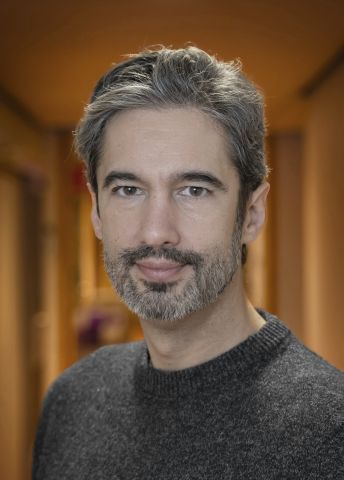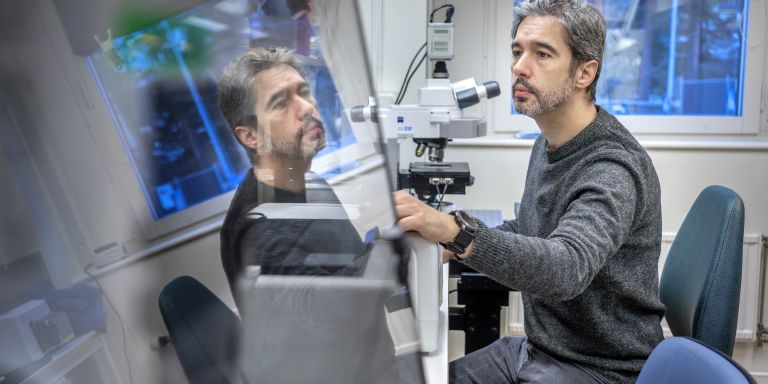
Felipe Cava
Professor of Infection Biology
Wallenberg Scholar
Institution:
Umeå University
Research field:
The cell wall biology of bacteria


Wallenberg Scholar
Institution:
Umeå University
Research field:
The cell wall biology of bacteria
Cava has always been fascinated by microbes’ ability to thrive in virtually any environment on Earth. They are some of the Earth’s most adaptable organisms, and their cell walls both protect them and make them vulnerable.
“Their adaptability and survival skills are incredible, making them exciting to study and challenging to combat when they cause disease,” says Felipe Cava.
To grasp what makes bacteria weak, one must first know what makes them strong. Felipe Cava’s research explores how bacteria cell walls, which serve as protective armor, are crucial to their survival and incredible adaptability.
“The cell wall acts as an exoskeleton of bacteria – giving them structure and protection, but it is also their most vulnerable spot. Many of our most effective drugs, such as penicillins, target the enzymes that build, break down or remodel the cell wall. When these processes are disrupted, the bacteria collapse and die. This is why the cell wall is often referred to as their Achilles heel – it’s a critical weak point that modern medicine has learnt to exploit,” he explains.
Even after decades of research, much remains to be learned about how the cell wall functions. Which genes dictate their structure? How does it respond to threats? And how do bacteria adapt when they are exposed to antibiotics?
“Thanks to newer technologies we’re now starting to answer some of these questions,” he says.
Combining robotics and advanced analytical methods such as ultra high-performance liquid chromatography and mass spectrometry, Cava’s team study the cell wall with unprecedented speed and detail.
“We can now analyze hundreds of samples in a single day to learn about the role of every single gene in shaping the cell walls of multiple bacterial species, including some of the most important pathogens. We are revealing genetic and chemical factors previously hidden from us. It’s a game changer,” says Cava.
Exciting new discoveries include the identification of several novel peptidoglycan synthetic enzymes and transporters that play a critical key role in cell wall maintenance.
“These are crucial discoveries. This opens doors to developing new and smarter antibiotics that target specific bacteria and their unique vulnerabilities,” says Felipe Cava.
Resistance to antibiotics is one of the greatest medical challenges of our time. When bacteria mutate to evade antibiotics, therapies lose their efficacy, turning treatable infections into life-threatening conditions.
This is not just a battle against bacteria – it’s about safeguarding our future.
“Understanding how bacteria adapt their cell walls is the key to keeping one step ahead and developing new therapies.”
Cava’s work not only involves combating existing resistant bacteria; he is also preparing for the future.
“We want to create a detailed ‘manual’ explaining the structure of and changes of cell walls –a map that can guide the development of next generation antibiotics and alternative therapies. This information will be crucial in advancing out battle against bacterial infections,” he says.
Funding from Knut and Alice Wallenberg Foundation will be used to break down the barriers that have kept the researchers from fully understanding how bacterial cell walls function at the genetic level and their adaptability to environmental changes – a process crucial for bacterial survival.
With the help of the grant, Cava’s team is now addressing a longstanding challenge in microbiology: identifying the key players involved in building and regulating bacterial cell walls with an unprecedented depth. Their recent discoveries indicate that the function of the cell wall depends on hundreds of genes, many of which are unexplored.
“These studies are leading to a re-evaluation of what we thought we knew about the cell wall and pushing our understanding of this vital bacterial structure to a whole new level,” says Felipe Cava.
Furthermore, the team is also developing new technologies to generate databases with information about the cell walls of many different bacteria, including the most important pathogens – microbes that cause disease.
“These resources will be available to researchers throughout the world, help us to understand how bacteria adapt and develop resistance. By identifying new vulnerabilities in the cell walls, we open the door to more effective and precise antibiotic therapies – an important piece if the puzzle in the fight against antibiotic resistance. This is an investment in the infection therapeutics of the future,” Cava says.
His work paves the way for a new discipline: cell wall system biology. He is combining genetics, biochemistry and biophysics in the hope of providing insights that can revolutionize both microbiology and medicine.
Challenges notwithstanding, Cava is optimistic about the future.
“This is a time of great potential. With the right tools and collaboration, we can not only outwit the bacteria, we can also change the fundamental way we see antibiotics and infectious diseases. We must continue to be able to successfully treat infections,” Cava says, and adds:
“Science is about opening doors. Our research is merely the beginning of something much bigger.”
Text Elin Olsson
Translation Maxwell Arding
Photo Johan Gunséus